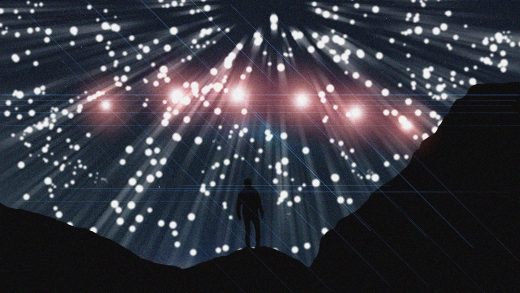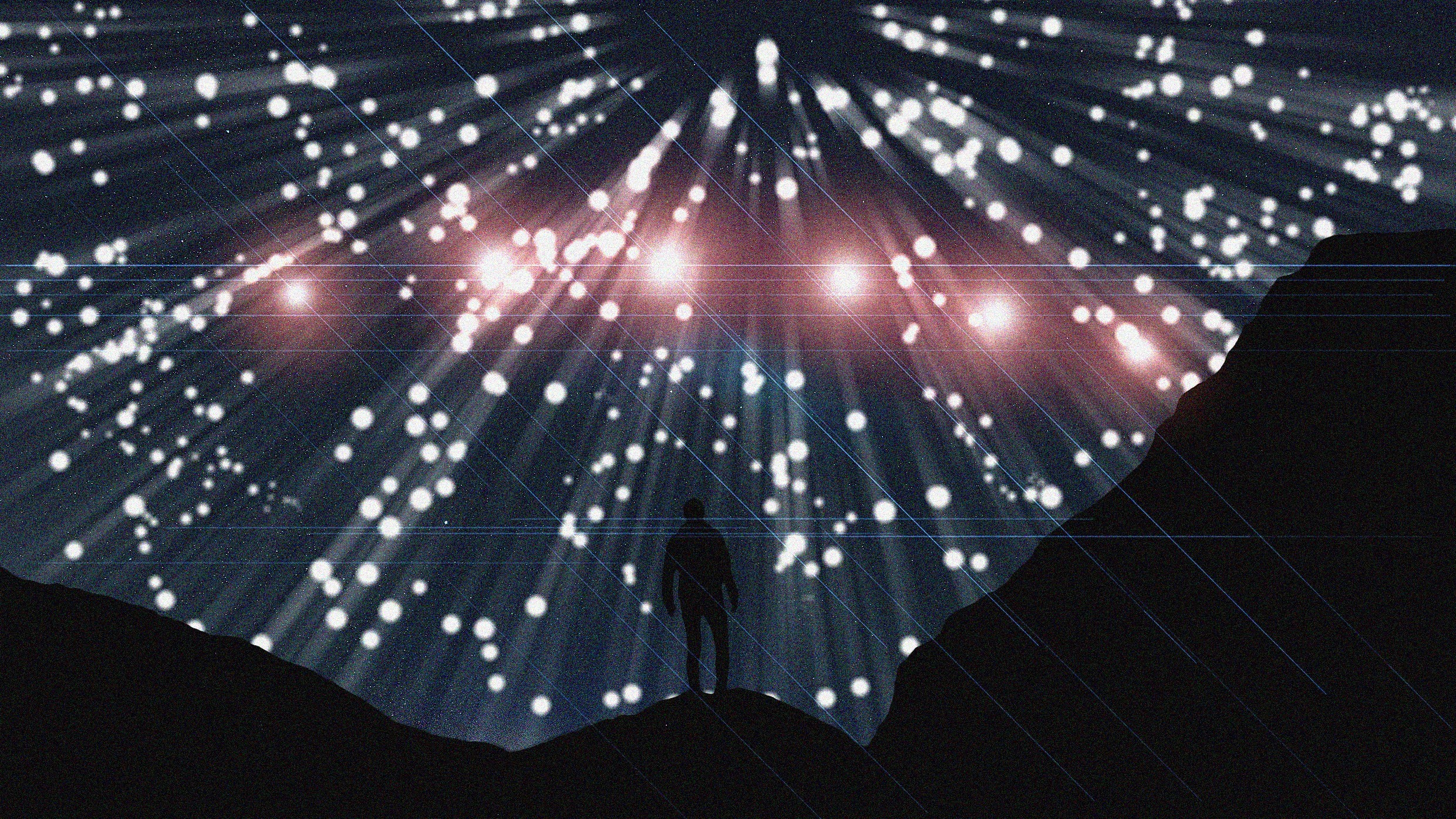The loss of our stars
A casual glance into the night sky on a clear night reveals 2,500 stars, giving us a view 16,000 lightyears away and into our past. This is our greatest natural wonder: the universe.
For the vast majority of human history, everyone on our planet enjoyed such a view. The stars were a grand unifier of humanity—a visualization of the Earth’s tiny spot in the vast cosmos. Our sky offered a map of our place in existence, twinkling its subliminal whisper into our collective consciousness, “You are here.”
That was until about a century ago, when we began filling our cities with electric lighting. For a while, it was possible to retreat to rural dark skies; but in 2019 SpaceX launched its first Starlink satellite, the initial pinpoint in a sky-wide “constellation” built to provide internet anywhere on Earth. The company is spearheading the global movement to launch satellites that are dotting our sky with artificial stars and could destroy the foundations of casual stargazing and astronomical study within the decade.
As of late 2022, there were roughly 5,000 objects in active orbit, 40% of which were Starlink satellites. And we are on the precipice of an exponential jump. The FCC has applications for 400,000 satellites that could be launched by 2030, about 10% of which could belong to Starlink. (Starlink/SpaceX did not respond to our request to speak for this story.) By 2030, astronomers I spoke to imagine that satellites will outnumber stars in the sky by 30:1.
“There’s no place on Earth you can go to escape them,” says Tim Hunter, an amateur astronomer who, 35 years ago, founded the International Dark-Sky Association. “You can be at the South Pole with the lights turned off, in the middle of the night, and the same number of satellites we see here would be down there.”
What makes these new satellites so intrusive isn’t their size (they are actually significantly smaller than the satellites we launched in the 1960s), it’s that they cruise lower and closer to our planet than traditional weather and communications satellites. This is why they glow in twilight (the time when most of us observe the stars)—and up to a billion times brighter than the darkest objects in our night sky.
The light from these satellites is actually reflected from our sun, and while Starlink has successfully made efforts to darken their satellites through various means, ranging from their angle to Earth to their paint, they’re still brighter than astronomers would prefer.
Patrick Seitzer, a Research Professor Emeritus at University of Michigan, says these small satellites are currently “20 to 40% brighter than we’d like.” By that, he’s referencing a very particular benchmark set by the American Astronomical Society, for which there is no legal bounds of enforcement. Their concern is that these satellites will photobomb research imagery and brighten the sky to the point where we lose the ability to peer deeply into space.
Stars are measured on a messy-looking, but highly mathematical scale known as magnitudes of brightness. The higher the number, the darker the star. Our own sun clocks in at -26th magnitude (blindingly bright) and our full moon clocks in at the -12th. Each single digit difference represents a big, logarithmic jump in visibility.
In 2019, the first Starlink satellite launched between the 4th and 5th magnitude of brightness—about the brightness of Venus—and, over time, Starlink has whittled down the brightness to roughly the 6th magnitude (what’s considered barely visible, though photo evidence begs to differ). The ultimate objective set by AAS is to have these satellites at the 7th magnitude of brightness.
“That’s [the brightness of] a star you could see if you were at a very dark sky with excellent vision. You’d just detect that object,” explains Seitzer. In other words, the AAS set the bar of Starlink’s satellites to be only as bright as the dimmest stars in the night sky. Well, almost. As Seitzer admitted, some people can reportedly see down to the 8th magnitude of brightness, “but we had to have a reasonable goal,” he sighs.
Seitzer explains that the true solution was to not launch these satellites to begin with. “But that train has left the station,” he says. “So, working collaboratively with the companies was going to yield results on a much quicker time scale.”
Seitzer, like all of the astronomers I spoke to for this piece, seemed a little placid, even cordial, about the state of Starlink taking over the night. No one I talked to questioned for a moment that space-based broadband should exist, as it can connect rural communities and has proven key to Ukraine’s ability to stay online during war. Yet, it’s a psychological mindset that I had difficulty confronting as a layperson feeling my anger swelling with every new factoid I learned. Shouldn’t our astronomers be the ones chained to the launchpads of Starlink, persuading them not to launch?
Teznie Pugh, a chair on the AAS’s Committee for the Protection of Astronomy and the Space Environment (COMPASSE), who runs the esteemed McDonald’s Observatory in Texas, explains a few reasons why her colleagues can seem passive. First, not all researchers are affected by these satellites (or at least, not yet), since much of our astronomy is done through means other than studying the visual light spectrum these satellites clutter.
“We don’t want to set the bar so high that people choose to launch in another country where the regulation is lower. That’s why we’re trying to work the best with operators to figure out what is reasonable and will have the most minimal impact to astronomy,” Pugh says. Unable to prevent the impact of satellites, the industry is doing its best to mitigate the damage as much as possible—suggesting standards and promoting some form of international regulation moving forward. The war over our stars is already lost, and they’re simply negotiating our terms of surrender.
“[But] there are also people in our field who will tell you this is an existential threat to our science, and something has to happen, or we’ll not only lose the ability to do astronomy but the inspiration for future generations to become astronomers,” she continues. “If you can’t go out and see the stars for yourself, what’s the aspect that gets you to be an astronomer in the first place?”
Pugh lists several real reasons for this concern. The first is the sheer scale of satellites that she and her colleagues at AAS are estimating will fill our sky. There are currently 427,000 applications with the for satellites that cruise in low orbit. To the chagrin of researchers, there is no governance over launching a satellite in the U.S. or globally, which makes regulating the field impossible. But satellites still need to register with the FCC and ITU (International Telecommunications Union) to communicate back to Earth through chunks of the radio spectrum, hence the applications.
“We doubt we’ll get all the way to 400,000, but we could imagine something in the realm of 150,000, and that would make a much larger impact on our science,” says Pugh. Even this lower end estimate would still vastly alter the sky most people see with their own eyes. In twilight, this would turn our sky into something like an artificial Christmas tree, overloaded by pretend pinpoints of light. Later into the night, the satellites would seem to disappear, but they would cast shadows over our stars as they trailed through the sky.
Already, satellites and planes show up in astronomical photography. Tim Hunter operates three telescopes out of southern Arizona, and he estimates that he spots objects in about every other photo he takes. Even the Hubble telescope, floating 300 miles above the Earth alongside these new low-Earth orbit satellites, sees streaks from man-made objects in about 10% of its images.
Astronomers are working on AI models to remove such interference, but astronomical research isn’t as inconsequential as touching up an image in Photoshop. When you remove any blemish, you inevitably remove data. Another potential fix is that, if companies shared exact trajectories of their satellites, then researchers can attempt to photograph around them. But this requires significant international cooperation, and not every entity in the sky will want to broadcast its positioning.
“My concern at this point is SpaceX is just one company. And there are a lot of companies building smaller constellations,” says Seitzer. That reality will inevitably make schedules harder, and increase the variety (and brightness) of satellites in low orbit. “If it’s cheaper not to worry about brightness as a design criteria, then they won’t,” says Seitzer.
The final challenge to astronomy is in the aggregate light pollution that these satellites may scatter into our atmosphere. In other words, our satellites will light up the night much like our cities do today, but from space. Several research papers have been published on the topic, concluding that LEO satellites reflect light that diffuses across the night sky—and that existing satellites and space debris already brighten that sky by as much as 10%. But we’re just getting started, and Pugh estimates that with 150,000 more satellites in the sky, we will see it brightens by “at least 10% more” by 2030.
“To put that in perspective, when building [astronomical] research facilities, it’s deemed to be unproductive to build a research telescope in an area that has more than 10% brightness in the night sky,” she says, noting how these satellites could negate the effectiveness of terrestrial research altogether. “That’s a global issue. Normally we deal with light pollution on a local level. When it comes from above, that’s a regulatory space that hasn’t been formed yet.”
When I suggest that, perhaps the future of astronomy simply needs to be in space, set up past the line of satellites in low orbit, the idea depresses Pugh greatly. She notes the extreme difficulty of securing time on a telescope like the Hubble or James Webb, even for accomplished researchers. Furthermore, a night sky with fewer visible stars means that young scientists will never be able to learn how to be astronomers.
“I broke my teeth on small telescopes as an astronomer, and there are a lot of things you can do with small telescopes you can’t do with large or space telescopes,” she says, noting that astronomers learn how to study on small telescopes first, while pointing out that longitudinal studies of certain stars, that might happen over a decade, will always necessitate having more small telescopes in the mix.
In their current trajectory, satellites seem destined to impact our ability to study the universe. And yet, as much as I value the future findings of science, my concern about losing our stars is more existential. Most of us living near large cities already don’t see much of the night sky, but that’s potentially solvable. With more restraint around superfluous lighting, Hunter says that modeling proves even a city like Chicago could be lit to safe levels, but still stay dark enough that you could see the Milky Way standing 100 yards from a street light in the park. In a generation, with the right priorities, our urban centers could reintroduce the night, he muses.
But with 150,000 satellites in the sky, these possibilities will be lost to all seven billion of us standing on the ground. No one will even be able to escape into the mountains, look up, and appreciate the unspoiled wonder of the cosmos. We are losing our window to the intergalactic community, the 200 billion trillion stars estimated to be out there twinkling in the infinite night. With all respect to progress, it is profoundly sad that our sky is being lost to the exact people who could really use a reminder of their importance in the grand scheme of the universe.
(17)



